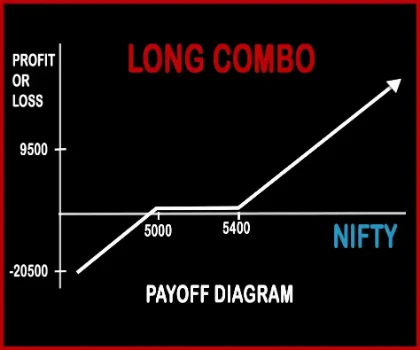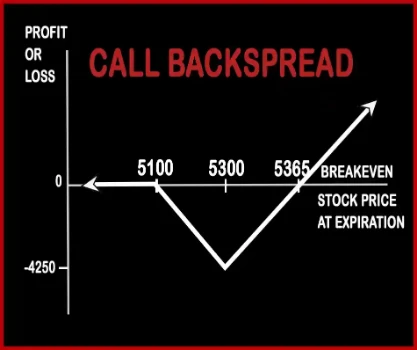Compare Strategies
| LONG COMBO | CALL BACKSPREAD | |
|---|---|---|

|

|
|
| About Strategy |
Long Combo Option StrategyLong Combo Option Trading Strategy is implemented when a trader is bullish in nature and expects the stock price to rise in the near future. Here a trader will sell one ‘Out of the Money’ Put Option and buy one ‘Out of the Money’ Call Option. This trade will require less capital to implement since the amount required to buy the call will be covered by the amount received |
Call Backspread Option Trading This strategy is adopted by traders who are bullish in nature. He expects market and volatility to rise in the near future. A trader need not be direction specific here (i.e. an upward or downward trend, but a small bias towards an uptrend should always be present, as the gains will be much higher once the market moves up r .. |
LONG COMBO Vs CALL BACKSPREAD - Details
| LONG COMBO | CALL BACKSPREAD | |
|---|---|---|
| Market View | Bullish | Bullish |
| Type (CE/PE) | CE (Call Option) + PE (Put Option) | CE (Call Option) |
| Number Of Positions | 2 | 3 |
| Strategy Level | Advance | Advance |
| Reward Profile | Unlimited | Unlimited |
| Risk Profile | Unlimited | Limited |
| Breakeven Point | Call Strike + Net Premium | Lower breakeven = strike price of the short call, Upper breakeven = strike price of long calls + point of maximum loss |
LONG COMBO Vs CALL BACKSPREAD - When & How to use ?
| LONG COMBO | CALL BACKSPREAD | |
|---|---|---|
| Market View | Bullish | Bullish |
| When to use? | This strategy is used when an investor Bullish on an underlying but don't have the required capital or the risk appetite to invest directly into it. | This strategy is used when the investor expects the price of the stock to rise in the future. |
| Action | Sell OTM Put Option, Buy OTM Call Option | Sell 1 ITM Call, BUY 2 OTM Call |
| Breakeven Point | Call Strike + Net Premium | Lower breakeven = strike price of the short call, Upper breakeven = strike price of long calls + point of maximum loss |
LONG COMBO Vs CALL BACKSPREAD - Risk & Reward
| LONG COMBO | CALL BACKSPREAD | |
|---|---|---|
| Maximum Profit Scenario | Underlying asset goes up and Call option exercised | Unlimited profit potential if the stock goes in upward direction. |
| Maximum Loss Scenario | Underlying asset goes down and Put option exercised | Strike Price of long call - Strike Price of short call - Net premium received |
| Risk | Unlimited | Limited |
| Reward | Unlimited | Unlimited |
LONG COMBO Vs CALL BACKSPREAD - Strategy Pros & Cons
| LONG COMBO | CALL BACKSPREAD | |
|---|---|---|
| Similar Strategies | - | - |
| Disadvantage | • Losses can keep on increasing as the price of stock goes down. • High risk strategy. | |
| Advantages | • Capital investment is low and returns are high. • Unlimited reward, returns keep on increasing with the increase on stock price. • Leverage facility provided by this strategy is very beneficial. | • Unlimited profit potential. |